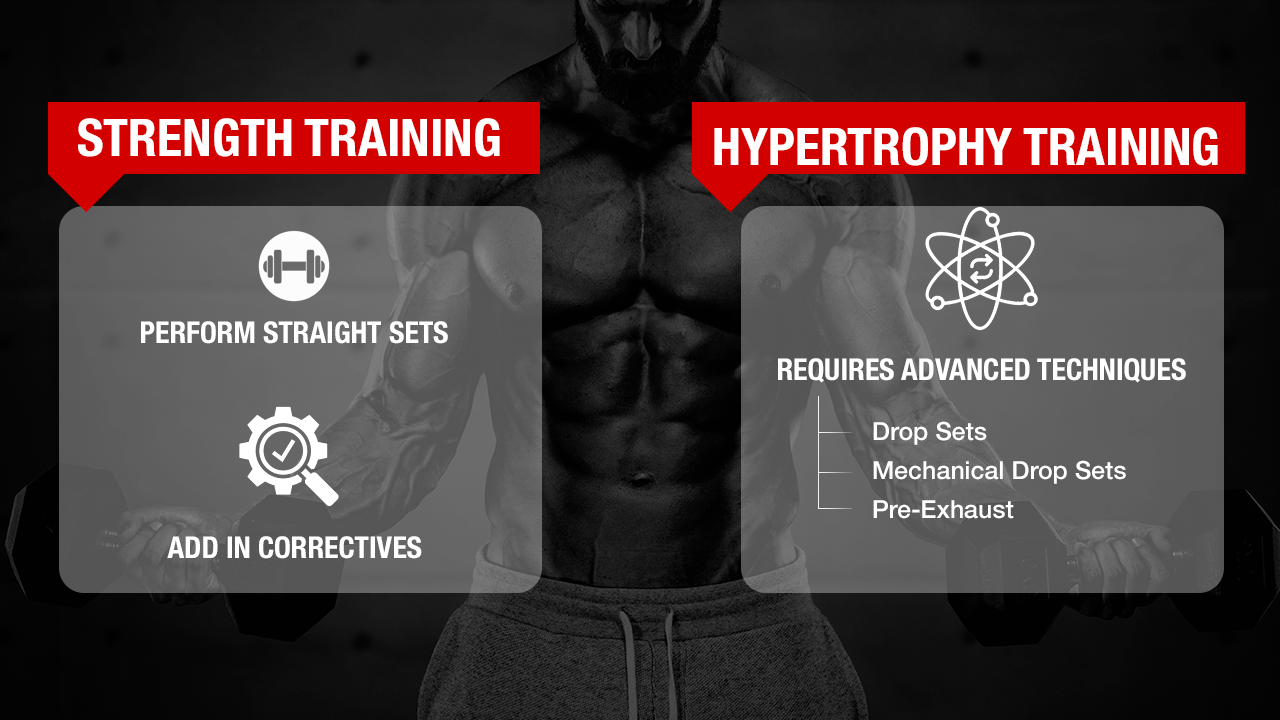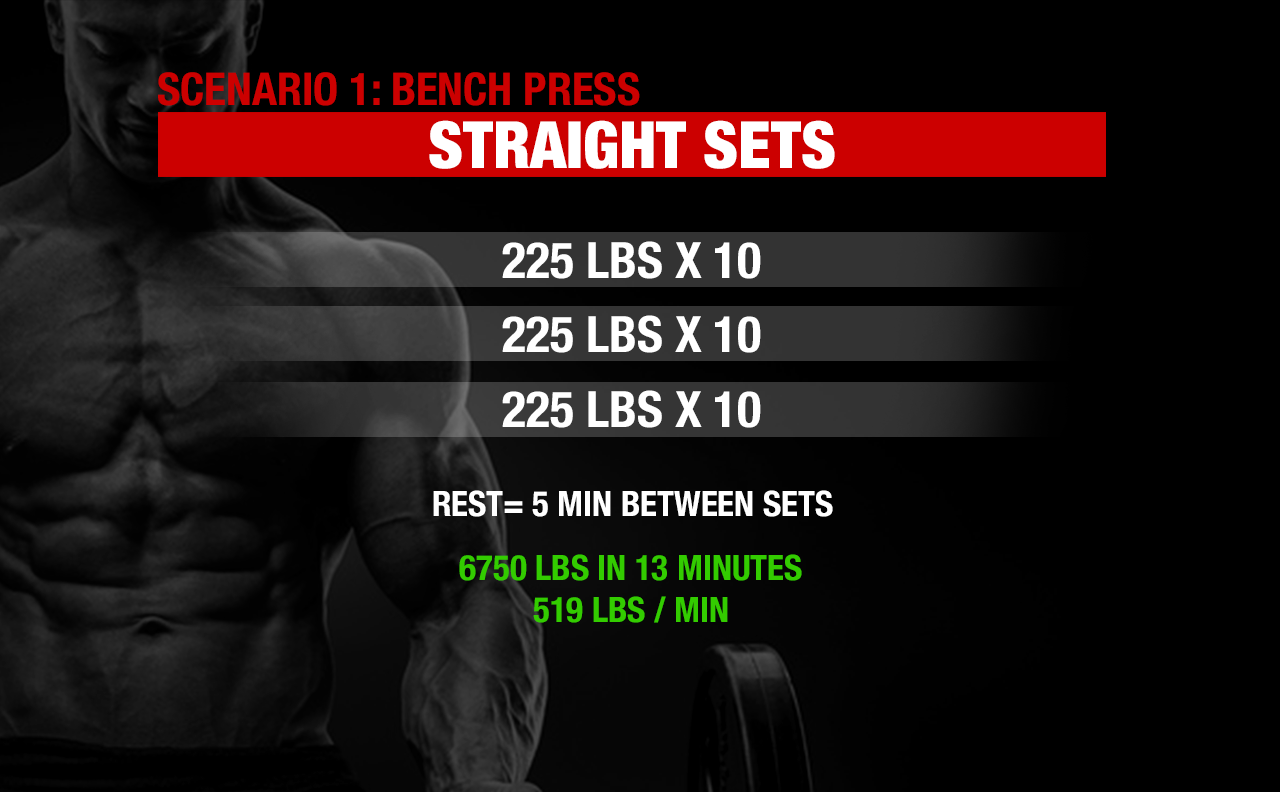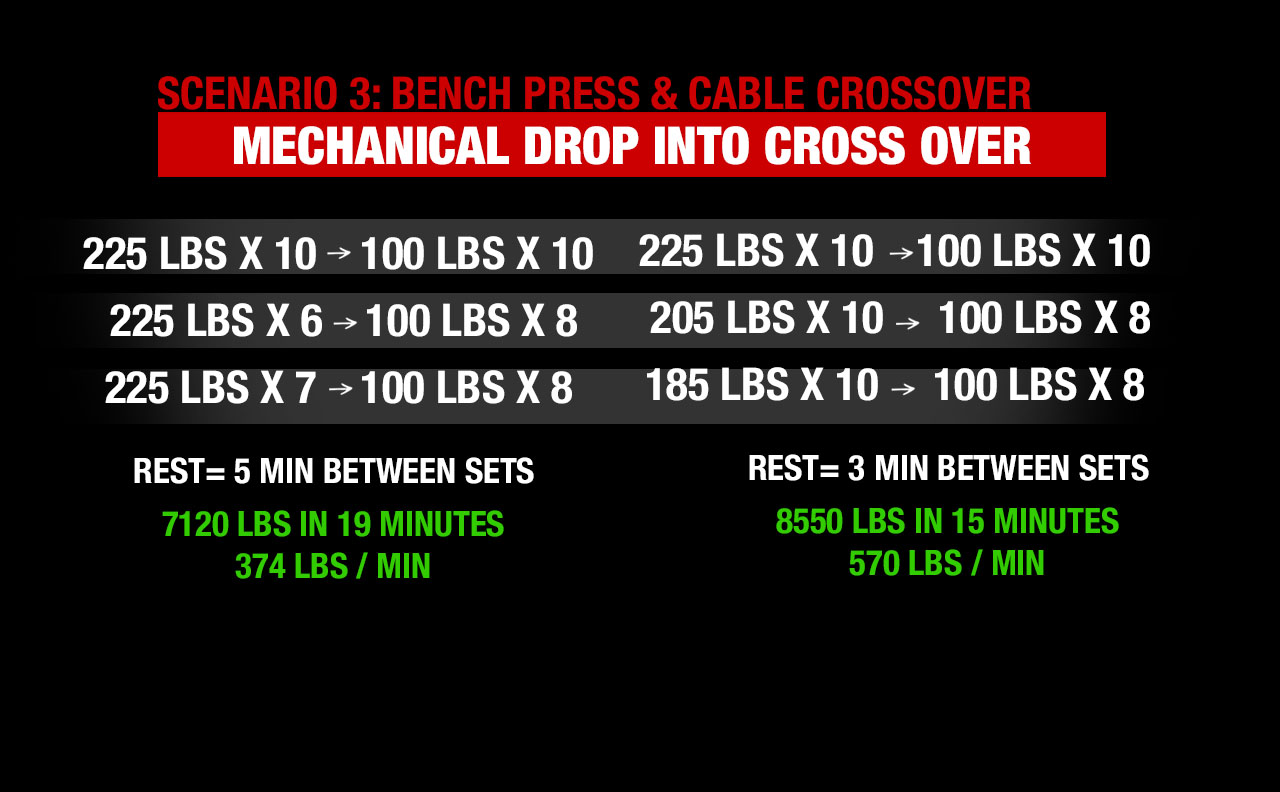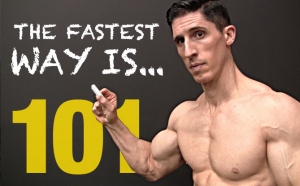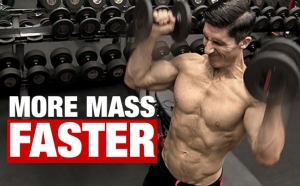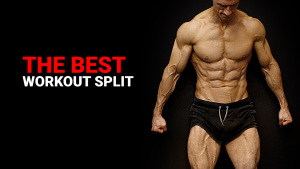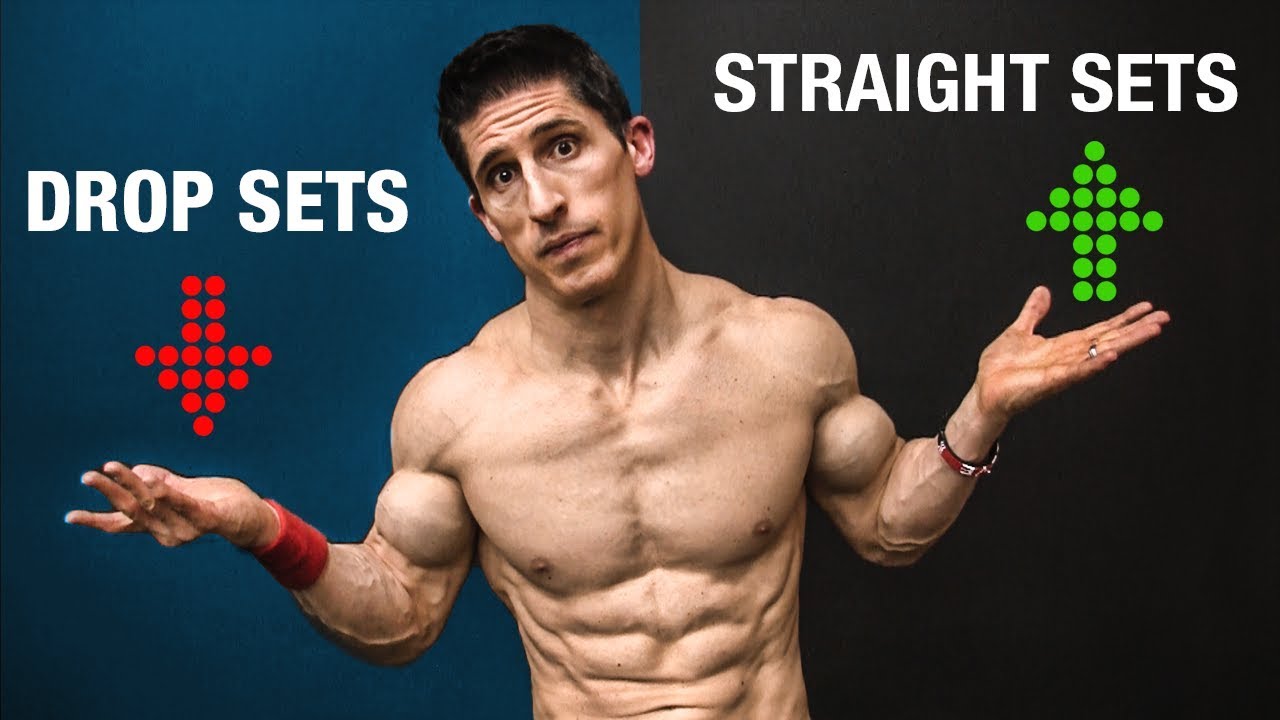
WHAT TYPE OF SETS IS BEST FOR MUSCLE GROWTH?
Guys, whether you’re new to resistance training or you’re a veteran, I have a question for you:
Do you know how you should perform your sets for one hundred percent maximum gains?
That’s something of a trick question because the first thing you need to worry about is whether you’re pursuing size gains or strength gains. Why?
There is going to be a difference in how you perform resistance training exercises based on this one question.
I want to show you how there are differences in how you’re performing your strength training sets, which is the most important thing for attaining those goals.
You ready?
WHAT’S YOUR FITNESS GOAL?
Before I talk about the best way to break up your workout routine to see maximal results, you need to figure out what your goal is.
Are you lifting for strength health or gains in muscle?
TRAINING FOR STRENGTH
If you’re a true beginner, what you should be focusing on is building your foundational strength and conventional resistance training. Afterall, your foundational strength is the basis of everything you do.
I strongly suggest you work on your correctives at the same time because by extension, this will improve your strength.
If you’re a beginner, your body didn’t learn the imbalances it has through challenging training days. The differences in strength that you have in your upper body, lower body, right side, left side – You didn’t develop these in your training. That’s because it’s your first time in the gym.
That means you developed these imbalances in everyday life, which means you need to work to correct them.
You want to address and correct those things through the right selection of exercises.
Let’s face it, an Overhead Shoulder Press, a Bench Press, a Squat, a Deadlift; none of them are working your rotator cuff.
You’ve got to start working in some Face Pulls and Band Pull-Aparts. You’ve got to start working in the right correctives. I know they sound boring, but they go hand in hand with your goals.
Adding in correctives while building on your foundational strength will ensure you have a solid foundation.
With all that said, your strength workout is going to focus on straight sets, and I’ll talk more about that below.
TRAINING FOR HYPERTROPHY / MUSCLE GROWTH
If your goal is potential muscle gain, you’ll follow a very different type of workout sets and acute variables.
But, remember this, even if you’re a beginner and you’re focusing on your strength training first, you will STILL see muscle growth. As a complete newbie to lifting, you have the good fortune of seeing yourself get stronger while building muscle mass, increasing muscular endurance, and burning fat.
But, let’s say that you’ve been lifting for a while.
If you’re a little bit further down the road, and you’re ready for more advanced technique hypertrophy workouts, then you’ll want to use different types of sets to maximize superior muscle gains.
I’m going to cover strength training techniques and reps for muscle to open up new ways to train that will jump start your progress and help you get over stubborn training plateaus.
MATCHING THE SETS TO THE GOALS
Now that you’ve established your fitness goals, I want to cover a specific type of tough resistance training breakdown for each goal.
I’ve created four resistance training technique scenarios that you can apply to all of the major compound exercises in your workouts.
I’ll be using the Plate-Loaded Bench Press on a flat bench as an example, but again, you can apply this training approach to those exercises that will target the major muscle groups like Squats, Deadlifts, and Bent Over Row.
Now, a quick heads up: the scenarios are oversimplified, and the numbers are arbitrary.
But this is done as a way for us to use simpler math and make it easier to understand.
Obviously, your strength numbers will be in the lower rep ranges – usually around 3 to 5 reps.
This is for the purpose for learning, and you would take your own numbers and scale them down accordingly.
All right, guys, grab your training journal and let’s cover these popular variations, starting at the beginning with muscular power and strength.
WHAT IS A STRAIGHT SET?
A straight set is when you perform a specific number of reps, followed by a rest period and repeat the same number of reps for one or more sets, typically using the same weight for each set. Straight sets are commonly used to train for strength.
If we were to perform a Bench Press with straight sets it would look something like this training regimen.
For the purpose of this example, let’s say 225 pounds for 10 repetitions is your maximum. It’s important to note that these numbers are essentially metrics for strength training stimulus.
If your 10-rep max is 225 pounds and five months from now you can Bench Press 285 pounds for 10 reps, you’ve gotten stronger.
But let’s say you’re benching 225 pounds for 10 reps and you’re taking an adequate rest time between sets. You do this because you know if you’re trying to train for strength, you have to allow yourself to recover in between sets – both neurologically and physically. This is to ensure you can get back to that bench and perform the same 10 reps with that 10 rep max of yours again.
So, you rest, and you manage to do three consecutive sets of 225 pounds at 10 reps because of that rest.
When you tally up the numbers, you see that you lifted 6,750 pounds across those three sets in 13 minutes.
Some quick math:
- 225 x 10 (reps) = 2,250
- 2,250 x 3 (sets) = 6,750
With that five-minute rest break in between, you lifted 519 pounds per minute.
When you train in straight set fashion, you’re sparing yourself all the intensity techniques that have a big impact on muscle hypertrophy training sessions.
You do this because they can really take you to a point of trouble, in terms of how much soreness you have in your muscle fibers. And this can make it hard for you to get back in the gym, continuing to work on your strength.
So, if you’re really trying to prioritize your strength, this would be the scenario that I would recommend for you.
One word of advice, I’d recommend having a training partner, especially when you’re going to your heaviest weight load during these resistance workouts. It can be tempting to use heavy weight by yourself, but it’s always worth it to have a spotter and someone who can correct your form in real time.
It’s also a good idea to record yourself performing a bench so that you can study the footage afterward to ensure your form was on point.
WHAT IS A DROP SET?
In a drop set, you begin the first set with a specific amount of weight and perform the lift to failure. Then on the subsequent set, you would drop the weight (typically by 30%) and perform that set to failure as well. Drop sets are often used to train for hypertrophy. The drop set method shouldn’t be confused with pyramid training although the two definitely have some similarities.
If you want to focus on the hypertrophy of muscles and muscle proteins, you could perform the bench press with drop set training.
So, the nature of drop sets means a 225-pound bench press, dropped by 30% would come down to 155 pounds.
So, you perform your first set to failure – 225 lbs. for 10 reps – then you drop that down immediately to 155 lbs. and rep out. Let’s say in this instance you got 8 reps. Now you’re going to rest again.
You’re not abandoning strength entirely in this example. One of the benefits of drop sets is that you can tap into both muscle strength and muscle gains.
With that said, drop set training tends to be more effective for hypertrophy training than strength training. Still, you’re trying to pursue the same idea with drop set workouts.
So, you rest your five minutes between training sets.
You come back, you do 225 pounds, and this time you’re going to be doing 8 reps. This is a natural drop off because you’re adding three additional sets of working the muscle until failure that you didn’t perform in the strength example. So, coming back to perform the 225 for 10 again is unrealistic.
You’re probably going to perform at a little bit of a decrease through this exercise, starting with 10 reps then going to 8 reps, and then 7 reps. You’ve got the same thing happening in your drop set as the fatigue continues to mount across the sets.
What that does is end up totaling 8,570lbs lifted in 16 minutes. It takes a little bit longer because there are additional sets to do here, and it comes out to be 535 pounds a minute.
Drop sets are a great way to build hypertrophy if you’re fresh off of your strength training program. Why? Because drop sets will allow you to tap into that much needed overload for muscle fiber growth while you’re supporting those recent strength gains.
WHAT IS A MECHANICAL DROP SET?
A mechanical drop set involves going through two or more different variations of an exercise or two complementary exercises, one per set, and each variation or complementary exercise being “easier” to perform than the last. This allows you to continue using a heavier weight throughout the training session. Mechanical drop sets are great for next level muscle gains.
Let’s say you graduated from strength training and normal drop sets. Mechanical drop sets are a great option for hypertrophy training because of their high intensity nature.
We’ll start with a compound exercise – in this case, we’re using the Bench Press – followed immediately by a mechanically easier exercise that is complementary to it. You want to pick an exercise that is still able to be done at a higher intensity and can maximize time under tension.
In this case, you would pair up the Bench Press with the Cable Crossover. We know that one thing that’s lacking from a Bench Press is a full chest range of motion. During a Bench Press, you don’t go into resisted adduction across the chest because your hands stay fixed on a bar.
A Cable Crossover does give you this resisted adduction, so we’re getting complementary stresses to the chest.
There are two ways we could approach a mechanical drop set with these two exercises. First, if we took 225 pounds for 10 reps to failure and then performed 50 pounds in each hand on the Cable Crossover, we would have a more significant drop off in reps in the second set. We would go from 10 reps in the first set, down to 6 in the second set, and to 4 in the third set.
Why is that? It’s because what you’re doing is more intense. You’ve taken the chest through a higher stress because of the selection of exercises. So, you’ll need to drop the load more than you would in a regular drop set.
This secondary exercise that taxes your body enough that it makes the first movement not as good, in terms of output. But that’s okay because your focus should be on training volume, not strength metrics. Using the above example, you’ll lift 7120 lbs in 19 minutes, or 374 lbs per minute.
The second option would be to keep the reps the same, but lower the weight on the Bench Press. So, if you Bench Press 225 pounds for 10 reps and do the Crossover for 100 pounds (total of both arms) for 10 reps, then in your second set, you will come down to 205 pounds in order to reach those 10 reps. Then to get to 10 reps in the third set, you’ve got to come down to the lighter weight of 185 pounds.
By doing this, you’ve brought your rep time down to three minutes between sets. That comes out to be 8,550 pounds in a shorter period of time for a total output of 570 pounds per minute.
WHAT IS A PRE-EXHAUST SET?
Pre-exhaust training is an advanced technique for hypertrophy in which you pre-fatigue your muscles before doing a compound lift to stimulate muscle growth.
This is a variation of the mechanical drop set, and in this case, we can take those two exercises and flip the order around.
Well, what we’re doing here is taking the Crossover and performing it in front of the Bench Press.
Once again, this is not a strength pursuit.
When you perform the first set of Bench Press, you won’t get anywhere near 225 pounds for 10 reps in that first set. Realistically, you’ll be closer to 7 reps.
After you pre-exhaust then jump into the Bench Press, you’ll enjoy your three-minute rest period in between. Remember, building muscle means minimal rest periods when compared to strength building. So, you’re always going to be able to get your 10 reps on your crossover. And you’ll see that your Bench Press continues to suffer.
For example, moving down to 225lbs for 5 reps, then 225lbs for 3 reps. You rest three minutes in between sets and it’s 6,375 lbs. in 15 minutes for 425 lbs. a minute.
WHICH TYPE OF SETS IS BEST FOR MUSCLE GROWTH?
To figure out which type of sets is best for muscle growth it’s important to ask yourself, “What’s the amount of stress that I’m applying to a muscle in a certain period of time?”
In all of the scenarios we looked at, the Crossover complements the stress being applied to the chest in the Bench Press. However, you can see that with the second example of the mechanical drop sets, we’ve used the two exercises together in a way that doesn’t require you to sacrifice volume. We’ve lifted more pounds per minute there than with any other training method.
Volume is extremely important to the overall picture with muscle growth.
So, if you’re trying to build muscle, I’d say mechanical drop sets are a great way to go.
Remember, if you’re a beginner or training specifically for strength, straight sets will work best for your goals. But when you get further down the road and are looking for hypertrophy, including drop sets and specifically mechanical drop sets into your training will bring you the gains you’re looking for.
When choosing whether to use straight sets, drop sets or mechanical drop sets, you must focus on what it is you’re trying to accomplish.
Then you can figure out the most efficient way for you to do that so you can get the returns you’re looking for in the most effective manner, in the least amount of time.
If you’re looking for training programs that will help you build muscle throughout the body, we’ve got you covered. Check to see which of our ATHLEAN-X programs best fit your goals.

- The way you perform your sets can make a huge difference in the amount of muscle size or strength levels you achieve from your training. From drop sets to straight sets, each plays a part when you want to focus on enhanced muscle size or strength. Follow these training tips for maximum gains.
- First, it is important to differentiate between size and strength goals. While these two usually go hand in hand when you are just starting out, they do tend to drift further apart as you progress.
- If you are chasing primarily strength goals, then you will want to focus on a straight set structure that allows you to achieve the highest strength output in your session. The idea is to physically and mechanically overload the tension generated in the working muscle and build a better neural adaptation to the stress to spark strength gains over time.
- Strength training requires efficiency of training. While drop sets do help with strength, this is the first level of breaking away from purely strength goals. Drop sets are when you rep out, training muscles to failure, lower the weight by about 30% then rep out to failure again.
- The next two models of training will tax the muscles in a way that could make it difficult for you to come back and train the movement again a second or even third time that week. This could compromise your ability to build the neural connection needed to see improved strength as quickly as you could. In other words, the next two sets are primarily for building muscle, not strength.
- For a mechanical drop set, you would select an exercise that is complimentary to the shortcomings of the first exercise performed. For example, a Bench Press with a Cable Crossover.
- Pre-exhaust sets are another way you can train these two exercises. You would simply change the order in which you performed the Crossover and Bench.

Jeff Cavaliere M.S.P.T, CSCS
Jeff Cavaliere is a Physical Therapist, Strength Coach and creator of the ATHLEAN-X Training Programs and ATHLEAN-Rx Supplements. He has a Masters in Physical Therapy (MSPT) and has worked as Head Physical Therapist for the New York Mets, as well as training many elite professional athletes in Major League Baseball, NFL, MMA and professional wrestling. His programs produce “next level” achievements in muscle size, strength and performance for professional athletes and anyone looking to build a muscular athletic physique.
















